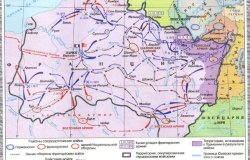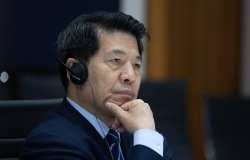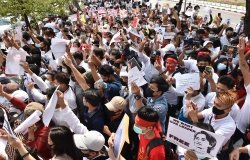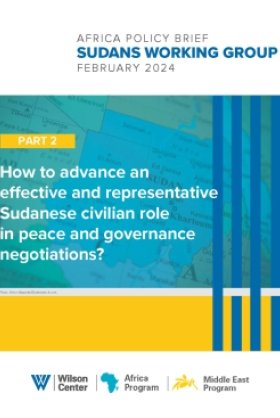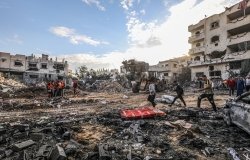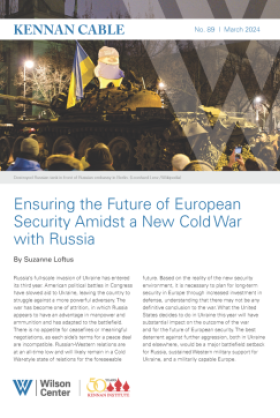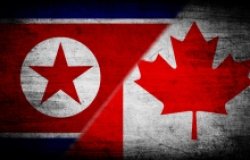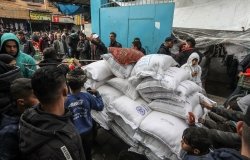In Search of Peace


Interview with Tetiana Maliarenko, Former Kennan Fulbright Scholar, Professor, Donetsk State University of Management, Ukraine
Malinkin: During your fellowship at the Kennan Institute, what were your main findings concerning the roles that institutions can play to prevent radicalization and violence? How would you apply what you have learned from your research to what has unfolded on the streets of Ukraine?
A strong state encompasses a whole spectrum of institutions for conflict prevention and management (formal and informal and at the local and national levels). If the state is institutionally weak and illegitimate, conflict will likely occur since the institutional constraints on aggressive predatory behavior are also weak or do not exist at all. The recent conflict in Ukraine illustrates this clearly. In fact, we can distinguish at least three dimensions of the conflict. Every dimension relates to the weakness of the Ukrainian state.
The first dimension manifests itself as the mass protests and clashes between civil society and the government (‘Euromaidan’) that resulted in hundreds of victims. Institutional exclusion, sudden and severe limitation on human rights and freedom (the so-called ‘dictatorship laws’) resulted in the radicalization of the protesters in Kyiv. Unwillingness of either side to compromise led to violent escalation of the conflict.
The second dimension is the separatist conflict on the periphery of Ukraine, which is evident in Crimea and still latent in Donetsk and Kharkiv. The causes for mobilization of the separatist movements are rooted in historical differences, including patterns of socio-economic development, linguistic and cultural differences between western and eastern provinces as well as foreign policy priorities and conflicting visions for the future. Since its independence in 1991, institutions and policies of the Ukrainian state have not accommodated the (often conflicting) interests of the local elites. Moreover, the local elite in both eastern and western Ukraine intentionally exaggerated and continue to exaggerate the differences in order to increase their political capital and electoral support.
Finally, the Russian invasion and annexation of Crimea have demonstrated the inability of the Ukrainian state to perform its primary function – to protect its territory and citizens. There is a gap between early warning and early response — early warning is inefficient, and there is a lack of trust in international institutions and international mediation. The only ‘peaceful agreement’ (the agreement between Mr. Yanukovych and leaders of the opposition that was signed after the mediation of the Polish, German, and French Foreign Affairs Ministers on February, 21 2014) was broken the following day. The OSCE established its mission in Ukraine in 1994 with the specific task to prevent political radicalization in Crimea, but 20 years later both sides demonstrated the lack of trust in the OSCE’s role in negotiation. Its delegates were announced as personae non-grata in Crimea.
What can you share with us of what is happening now in Donetsk and Donetsk oblast? What is the reaction in your region to the current state of affairs in Ukraine?
Donetsk and the wider Donetsk region as a unique province of Ukraine (a highly industrialized and highly urbanized territory with 10% of Ukraine’s population and about 25% of Ukraine’s GDP) gives us the fourth dimension of the links between state weakness and conflict. Following the collapse of the Soviet Union, and the anarchy and criminal turf wars of the early 1990s, local elites created an institutional matrix where informal (and often corrupt) institutions and norms replaced the formal laws and institutions of the state. This matrix includes mechanisms of conflict prevention and negotiation, allowing for peace between different social groups inside and outside of the Donetsk region.
However, while residents of Donetsk rely on informal institutions and public trust in the state remains low, the ‘Donetsk matrix’ is still competing with the weakening Ukrainian state, and it is undermining the foundation of its future existence. In the meantime, both local elite and ordinary residents of Donetsk (the overwhelming majority of whom are ethnic Russians and Russian-speakers) remain neutral in the conflict between Kyiv and Moscow (cities to which they are equidistant).
The situation at the moment is characterized by ongoing instability and insecurity in Donetsk, which manifests itself in local clashes between pro-Russian and pro-Ukrainian activists and the threat of a Russian military invasion, which may yet again be justified by the Kremlin as protection of ethnic Russians and Russian-speakers in Ukraine. Three major factors account for this continuing crisis: spreading instability from both Kyiv and Crimea to the eastern parts of Ukraine, the collapse of the Ukrainian economy, and easy access of the protesting groups to resources (including finances and weapons).
Has Ukraine’s experience of the last few months shaped your thinking on the other countries in your study (Belarus and Moldova)? If so, how? Can we expect similar trends in Belarus and Moldova? Why or why not?
Ukraine and Moldova are very similar (also due to the existence of unrecognized territories). Both countries have been pulled in different directions—east, towards Russia, and west, towards the EU— as a result of both the linkages that their societies have and the leverage that Moscow and Brussels exercise. Yet, at the same time, both countries suffer from systemic crises of institutional weakness and internal divisions that are enabled by competing linkage vectors and exacerbated by great power leverage.
Russia and the EU have both tried to pull Ukraine and Moldova into their respective orbits through similar policies: the Eastern Partnership and the Association Agreements with their various promises and the Eurasian (Customs) Union. While Ukraine and Moldova could be simply considered pawns in the larger game of these competing geopolitical projects, domestic factors significantly shape eventual outcomes in both countries and in turn influence the strategies and policies of Moscow and Brussels.
The first question to ask is where Russia might ‘go’ next. It already controls Belarus, and has severed Abkhazia and South Ossetia from Georgia. But Russia is in a much weaker position in Moldova, unless it chooses military escalation. Even though there are significant and ostensibly pro-Russian forces, the idea of a European future has gained significant traction in Moldova. The country’s economic problems, political divisions, and social tensions, though significant, are nowhere near the scale of Ukraine’s and consistent and constructive EU enlargement has created a strong foundation for the country to move decisively into the EU’s orbit and away from Russia – with our without Transnistria.
Mary Elizabeth Malinkin
Matthew Rojansky, Director, Kennan Institute
About the Authors

Kennan Institute
The Kennan Institute is the premier US center for advanced research on Russia and Eurasia and the oldest and largest regional program at the Woodrow Wilson International Center for Scholars. The Kennan Institute is committed to improving American understanding of Russia, Ukraine, Central Asia, the Caucasus, and the surrounding region though research and exchange. Read more


